Create a beautiful and serene landscape with Astilbe's vibrant blooms and lush foliage
Immensely popular, Astilbes are fabulous plants for shady, moist conditions. They light up your shade garden for weeks with their elegant flower plumes and add a dazzling splash of color to the landscape. Ranging from 6 in (15 cm) to 24 in. tall (60 cm), their feathery plumes, in shades of lavender, pink, red, or white, can be incredibly striking. They rise gracefully above attractive mounds of fern-like foliage that remains attractive all season long (under satisfactory growing conditions) before turning progressively a rich caramel color that provides winter interest to the garden.
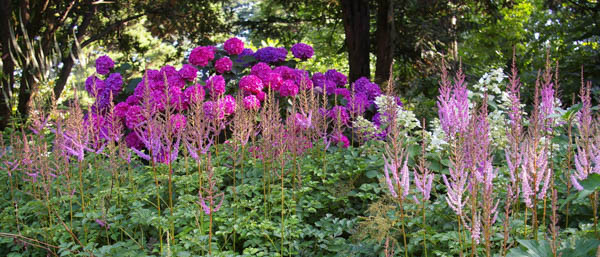
Chinese Astilbe ‘Superba’ (Astilbe chinensis var. taquetii), Hydrangea ‘Glowing Embers’
.jpeg)
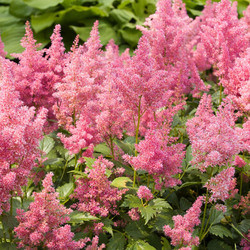
Astilbe ‘Mainz’ |
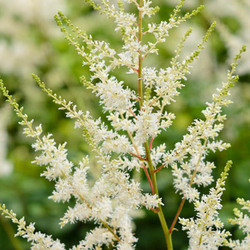
Astilbe ‘Diamond’ |
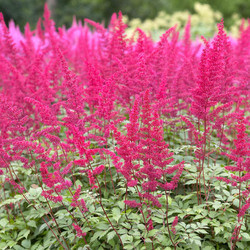
Astilbe ‘Montgomery’ |
.jpeg)
|
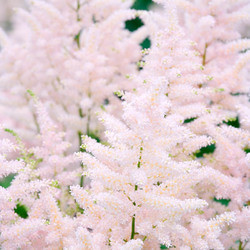 |
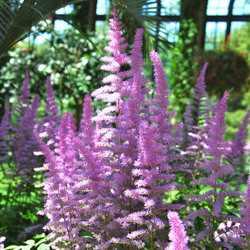 |
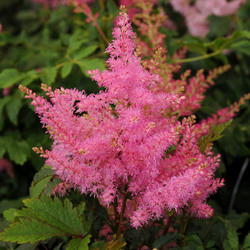
|
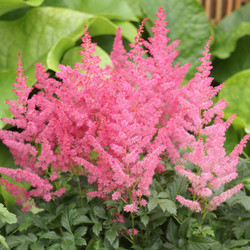
|
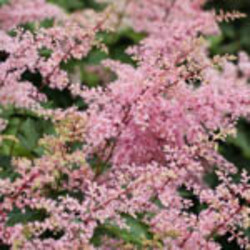
|
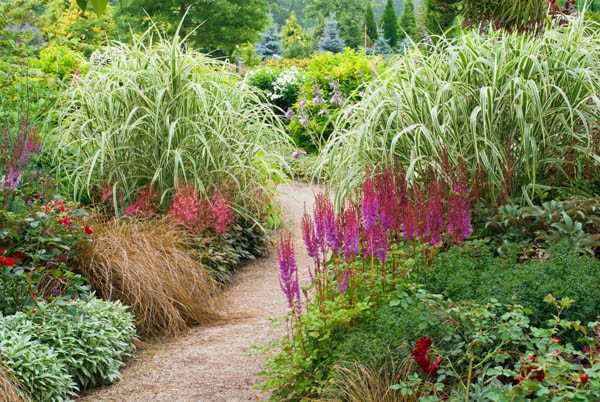
Miscanthus sinensis ‘Cosmopolitan’, Astilbe chinensis var. taquettii ‘Purpurlanze’, Astilbe simplicifolia ‘Aphrodite’,
Carex flagellifera (Sedge) and Anaphalis triplinervis ‘Sommerschnee’ (Pearly Everlasting Flower )
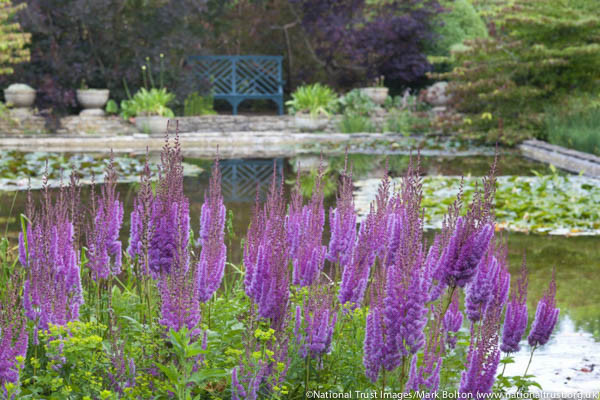
Astilbe chinensis var. tarquettii ‘Superba’ growing next to the Lily Pond at The Courts Garden, Wiltshire.
|
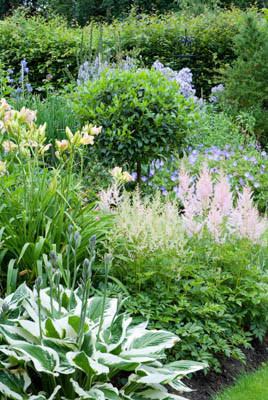 Hosta, Astilbes, Daililies, Geranium Hosta, Astilbes, Daililies, Geranium |
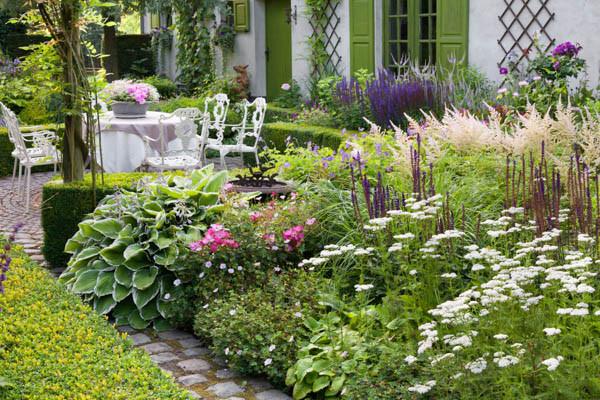
.jpeg)
Astilbe ‘Hyacinth’, Primula florindae, Acorus calamus, Achillea ‘Pastel mix’, Stachys grandiflora
If unsure which Astilbe to select for your garden or containers, here is a list of favorite Astilbe varieties among gardeners. If acclaimed by others, you cannot go wrong!
Astilbe ‘Sprite’ (Simplicifolia Hybrid) is a popular choice with gardeners thanks to its airy, shell-pink flowers, which open even in heavy shade. This dwarf Astilbe is particularly suited to outdoor containers and won the 1994 Perennial Plant of the Year Award and the prestigious Award of Garden Merit of the Royal Horticultural Society. Blooms in mid-late summer and grows up to 12-18 in. tall (30-45 cm).
Astilbe ‘Deutschland’ (Japonica Hybrid) features its stunning, dense, white plumes, which make long-lasting cut flowers. Blooms in late spring or early summer and grows up to 24-30 in. tall (60-75 cm).
Astilbe chinensis ‘Pumila‘ is a low-growing Astilbe that makes an attractive groundcover. Winner of the Award of Garden Merit of the Royal Horticultural Society, it displays fluffy, rich, lavender-purple flowers in late summer. Grows up to 12-18 in. tall (30-45 cm).
Astilbe chinensis ‘Vision’ is another Astilbe variety that is admired by many gardeners for its upright, thick, pyramidal, slightly fragrant flower plumes in shades of raspberry pink, deep red, or white. Blooms in early-mid summer over a deep bronze green foliage and grows up to 18 in. tall (45 cm).
Astilbe ‘Rheinland’ (Japonica Hybrid) is another popular variety with its clear pink flowers on upright, reddish stems in early-mid summer. Winner of the Award of Garden Merit of the Royal Horticultural Society, it grows to 12-24 in. tall (30-60 cm).
Astilbe ‘Bridal Veil’ (Arendsii Hybrid) is a reliable and free flowering Astilbe with luminous, dense, ivory-white flower plumes in late spring – early summer, which stand out in the night garden. Winner of the Award of Garden Merit of the Royal Horticultural Society, it grows up to 28 in. tall (70 cm).
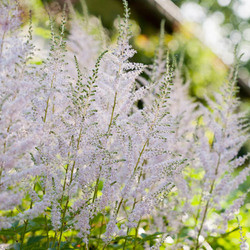
|
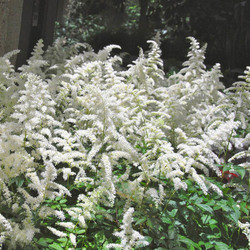
|
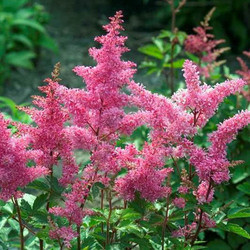
Astilbe ‘Rheinland’ |
.jpeg)
Astilbe Chinensis ‘Vision’ |
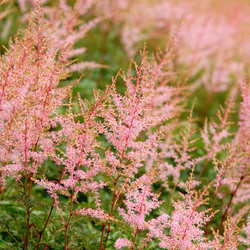
|
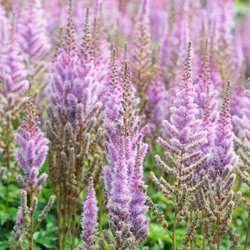
|
| Hardiness |
3 - 9 |
|---|---|
| Heat Zones |
2 - 8 |
| Climate Zones | 1, 1A, 1B, 2, 2A, 2B, 3, 3A, 3B, 4, 5, 6, 7, 8, 9, 14, 15, 16, 17, 18, 19, 20, 21, 22, 23, 24, A2, A3 |
| Plant Type | Perennials |
| Genus | Astilbe |
| Exposure | Partial Sun, Shade |
| Season of Interest |
Spring (Late) Summer (Early, Mid, Late) |
| Height |
6" - 5' (15cm - 150cm) |
| Spread |
1' - 2' (30cm - 60cm) |
| Maintenance | Low |
| Water Needs | Average |
| Soil Type | Loam |
| Soil pH | Acid, Alkaline, Neutral |
| Soil Drainage | Moist but Well-Drained, Moisture Retentive |
| Characteristics | Dried Arrangements, Cut Flowers, Showy |
| Tolerance | Deer, Full Shade, Rabbit, Wet Soil |
| Attracts | Bees, Butterflies |
| Garden Styles | Informal and Cottage |
By Julija Kumpinovica, Shutterstock, Gap Photos/ Robert Mabic, Mark Bolton, Juliette Wade, Richard Bloom
| Hardiness |
3 - 9 |
|---|---|
| Heat Zones |
2 - 8 |
| Climate Zones | 1, 1A, 1B, 2, 2A, 2B, 3, 3A, 3B, 4, 5, 6, 7, 8, 9, 14, 15, 16, 17, 18, 19, 20, 21, 22, 23, 24, A2, A3 |
| Plant Type | Perennials |
| Genus | Astilbe |
| Exposure | Partial Sun, Shade |
| Season of Interest |
Spring (Late) Summer (Early, Mid, Late) |
| Height |
6" - 5' (15cm - 150cm) |
| Spread |
1' - 2' (30cm - 60cm) |
| Maintenance | Low |
| Water Needs | Average |
| Soil Type | Loam |
| Soil pH | Acid, Alkaline, Neutral |
| Soil Drainage | Moist but Well-Drained, Moisture Retentive |
| Characteristics | Dried Arrangements, Cut Flowers, Showy |
| Tolerance | Deer, Full Shade, Rabbit, Wet Soil |
| Attracts | Bees, Butterflies |
| Garden Styles | Informal and Cottage |
Create a membership account to save your garden designs and to view them on any device.
Becoming a contributing member of Gardenia is easy and can be done in just a few minutes. If you provide us with your name, email address and the payment of a modest $25 annual membership fee, you will become a full member, enabling you to design and save up to 25 of your garden design ideas.
Join now and start creating your dream garden!
Create a membership account to save your garden designs and to view them on any device.
Becoming a contributing member of Gardenia is easy and can be done in just a few minutes. If you provide us with your name, email address and the payment of a modest $25 annual membership fee, you will become a full member, enabling you to design and save up to 25 of your garden design ideas.
Join now and start creating your dream garden!